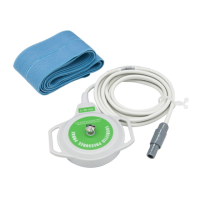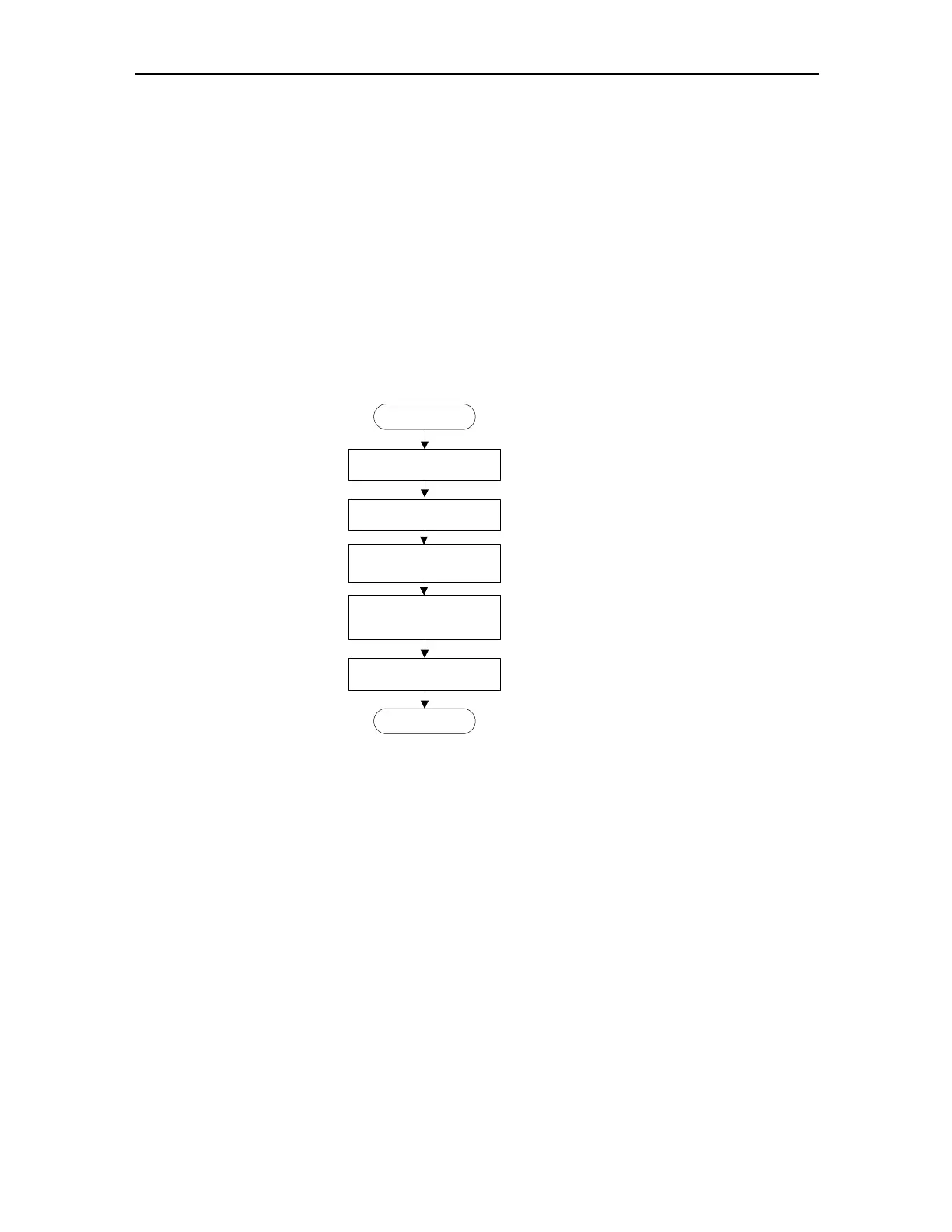Cadence II Fetal Monitor Service Manual
- 11 -
transducer is in the proper place. Magnify and filter f0±fd Doppler frequency shift
ultrasound echo received by hardware system, then demodulate it, the (f0±fd)- f0=±fd
signal is obtained. After the signal is filtered by Doppler frequency shift filter, it is rectified
in full wave, and low-pass filtered. The envelope signal of Doppler frequency shift is
extracted, and sent to multi-channel strobe. It will become digital signal via A/D
transform. FHR is obtained by DSP auto-correlation operation. The Doppler audio is not
real sound, but an imitative sound caused by Doppler frequency shift change brought by
movement object. The FHR signal range is 50-210BPM.
FHR signal processing flow is as follows.
TOCO Measurement Operation Principle
External TOCO measurement sub system uses the strain gauge bridge. When strain
gauge suffers pressure, the bridge connection will lose balance, and produces an output
signal. The pressure changes very slowly, so a low-pass filter is set to filter noise signal.
It will change into digital signal via A/D, and its relevant value is computed by DSP. We
take 100 gram forces as 100 units, pressure measured by TOCO is contact force sensor
processing.
1.4 Function Modules
CADENCE II Monitor obtains accurate and reliable parameters, e.g. FHR and maternal
uterine activity, etc. by using pulsed Doppler ultrasound, external TOCO, etc. invasive
detection technology and device. The structure of CADENCE Series may be different
Examine Signals
Begin
End
Auto-correlation
Arithmetic
Connect Auto-correlation
Results
Analyze Auto-correlation
Results
Calculate Periods

